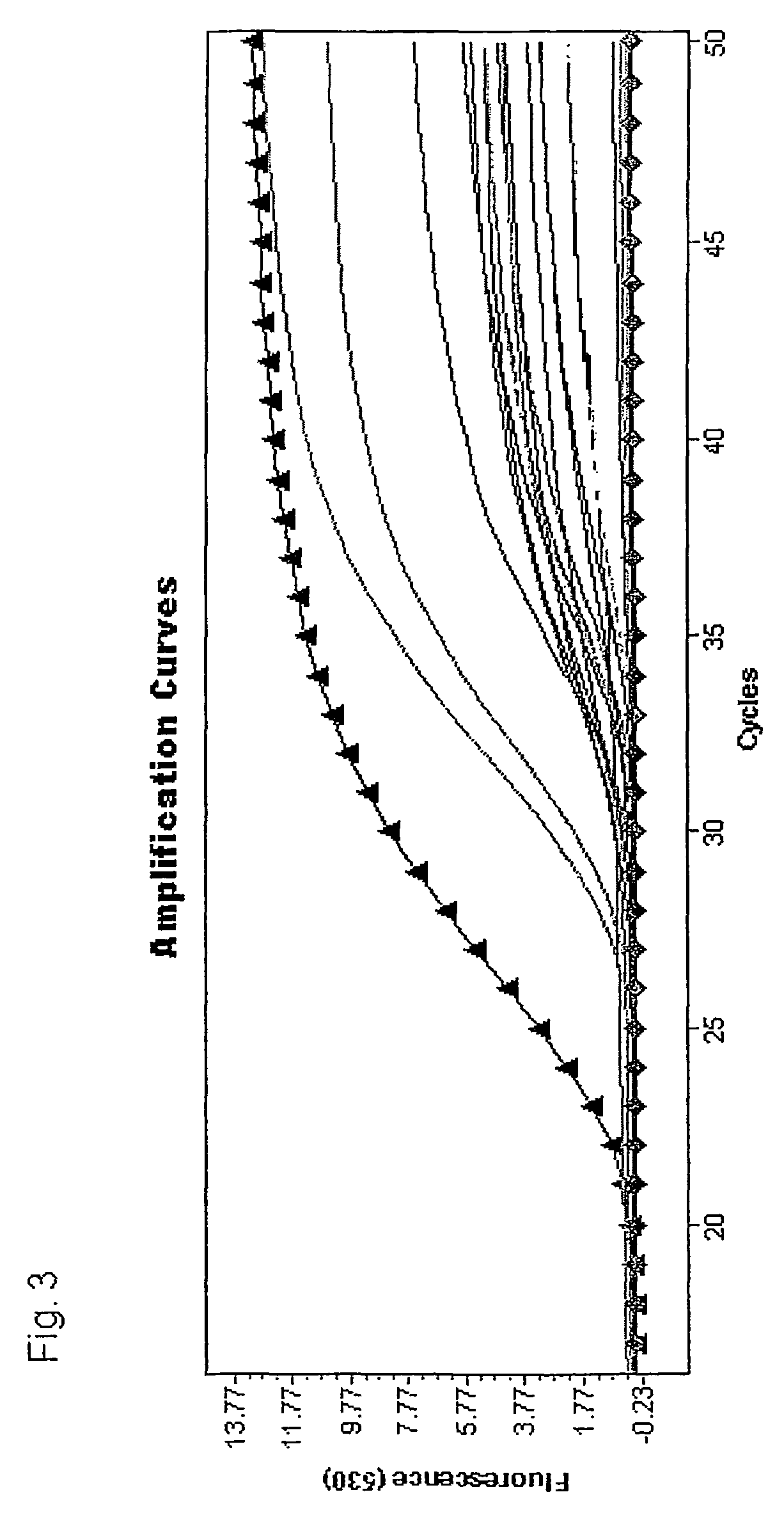Method for quantification of methylated DNA
a methyl cytosine and dna technology, applied in the field of methyl cytosine quantification in dna, can solve the problems of pcr amplification, inapplicability of usual methods for identifying nucleic acids, and loss of epigenetic information carried by 5-methylcytosine during pcr amplification
- Summary
- Abstract
- Description
- Claims
- Application Information
AI Technical Summary
Benefits of technology
Problems solved by technology
Method used
Image
Examples
example 2
[0042]In this experiment 1.8 mL serum samples from 30 patients without colon cancer and 30 patients with colon cancer or colon polyps were measured using a MSP MethyLight assay with hydrolysis (Taqman™) probes. The aim is to predict the presence of colon cancer with high sensitivity and specificity. The area under the ROC curve (AUC) is used to quantify the prediction performance. A Receiver Operating Characteristic (ROC) curve is a plot of the true positive rate against the false positive rate for the different possible cutpoints of a diagnostic test. It shows the tradeoff between sensitivity and specificity depending on the selected cutpoint (any increase in sensitivity will be accompanied by a decrease in specificity). The area under an ROC curve (AUC) is a measure for the accuracy of a diagnostic test (the larger the area the better, optimum is 1, a random test would have a ROC curve lying on the diagonal with an area of 0.5; for reference: J. P. Egan. Signal Detection Theory an...
PUM
| Property | Measurement | Unit |
|---|---|---|
| real time PCR | aaaaa | aaaaa |
| shape | aaaaa | aaaaa |
| real time | aaaaa | aaaaa |
Abstract
Description
Claims
Application Information
 Login to View More
Login to View More - Generate Ideas
- Intellectual Property
- Life Sciences
- Materials
- Tech Scout
- Unparalleled Data Quality
- Higher Quality Content
- 60% Fewer Hallucinations
Browse by: Latest US Patents, China's latest patents, Technical Efficacy Thesaurus, Application Domain, Technology Topic, Popular Technical Reports.
© 2025 PatSnap. All rights reserved.Legal|Privacy policy|Modern Slavery Act Transparency Statement|Sitemap|About US| Contact US: help@patsnap.com



